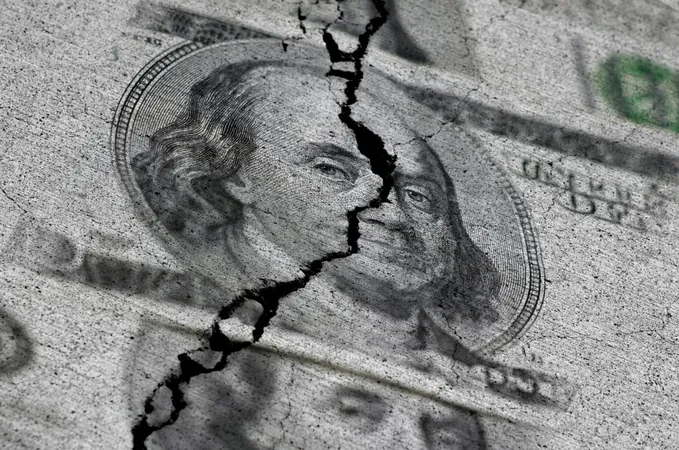
Is America’s Economic Bubble on the Verge of Bursting? Expert Warns of Impending Debt Crisis!
2024-12-23
Author: Jia
Overview of the Economic Situation
As the economic landscape teeters on the brink, financial analyst Ruchir Sharma, chair of Rockefeller International, warns that the "mother of all bubbles" in the United States may soon pop due to an overwhelming addiction to debt. In his recent article for the Financial Times, Sharma elaborates on how the U.S.'s remarkable economic outperformance compared to the rest of the globe has been artificially inflated, raising alarms for future consequences.
The Illusion of Growth
Sharma emphasizes that while Wall Street advocates celebrate strong earnings, the reality is far less impressive when scrutinizing the impacts of government spending and the disproportionate influence of a handful of tech giants whose valuations are soaring. He reminds investors that "supernormal profits" are generally followed by a return to normalcy as competition intensifies.
The Debt Crisis
The current public debt, which stands at nearly 100% of GDP, is projected to exceed records set in the aftermath of World War II. Notably, this ballooning debt issue emerges in a stable economic environment rather than from a widespread catastrophe, highlighting the precarious nature of the current financial situation.
Rising Interest Payments
Compounding the crisis is the skyrocketing expense of servicing this massive debt. Interest payments have surged to $1 trillion annually, now eclipsing defense spending and significantly contributing to federal deficits, creating a dangerous cycle.
Signs of Economic Resilience
Despite the federal government's financial woes, U.S. households and corporations exhibit strong balance sheets that continue to stimulate the economy. A recent upward revision of third-quarter GDP growth to 3.1%, boosted by consumer spending, offers a glimmer of hope amid the turmoil.
Potential for Market Fatigue
However, Sharma warns that “every hero has a fatal flaw,” and America’s peril lies in its escalating dependency on government debt. His calculations indicate an alarming trend: the need for $2 in new government debt to achieve an additional $1 in GDP growth, a 50% increase from five years ago.
Investment Concerns
Market fatigue could trigger a seismic shift, as Sharma predicts an imminent demand from investors for higher interest rates on newly issued debt or actionable fiscal discipline. This shift could usher in efforts to curtail government spending, subsequently slowing growth and corporate profits.
Emerging Signs of Crisis
Moreover, signs of a potential crisis are already emerging. Investment giant Pimco has announced a reduction in its exposure to long-term U.S. bonds, signaling mounting concerns over the spiraling debt levels.
The Role of Global Economic Conditions
The situation could be exacerbated if economies in Europe or China begin to rebound, diminishing America’s relative edge. Sharma warns that unforeseen events could also play a critical role in triggering a decline.
Conclusion
“Historically, in the latter stages of a bubble, prices experience parabolic growth, and U.S. stock prices have surged at an unprecedented rate over the last six months,” he cautions. “In such a fragile state, it doesn't take much to disrupt the momentum. All indicators of extreme valuations and market sentiment suggest that this could be the beginning of the end for 'American exceptionalism.'”
With stakes this high, the question remains: Are we on the precipice of a dramatic economic reckoning? Investors and analysts alike should remain vigilant as we move forward in these uncertain times.



 Brasil (PT)
Brasil (PT)
 Canada (EN)
Canada (EN)
 Chile (ES)
Chile (ES)
 España (ES)
España (ES)
 France (FR)
France (FR)
 Hong Kong (EN)
Hong Kong (EN)
 Italia (IT)
Italia (IT)
 日本 (JA)
日本 (JA)
 Magyarország (HU)
Magyarország (HU)
 Norge (NO)
Norge (NO)
 Polska (PL)
Polska (PL)
 Schweiz (DE)
Schweiz (DE)
 Singapore (EN)
Singapore (EN)
 Sverige (SV)
Sverige (SV)
 Suomi (FI)
Suomi (FI)
 Türkiye (TR)
Türkiye (TR)